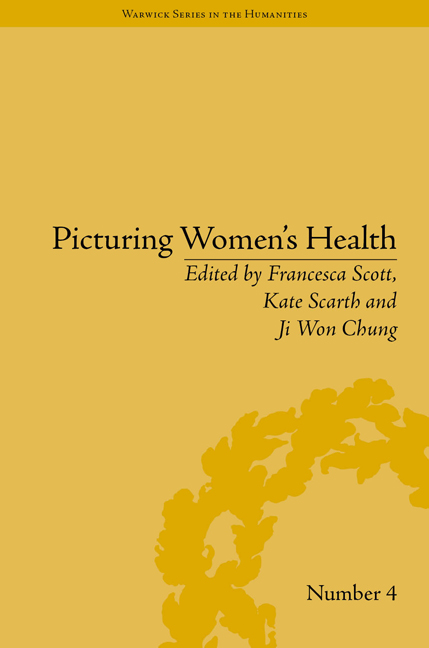Book contents
- Frontmatter
- CONTENTS
- Acknowledgements
- List of Contributors
- List of Figures
- Introduction: Picturing Women's Health
- 1 Sensibility and Good Health in Charlotte Smith's Ethelinde
- 2 Amazonian Fashions: Lady Delacour's (Re)Dress in Maria Edgeworth's Belinda
- 3 Transforming the Body Politic: Food Reform and Feminism in Nineteenth-Century Britain
- 4 Stagnation of Air and Mind: Picturing Trauma and Miasma in Charlotte Brontë's Villette
- 5 The Iconography of Anorexia Nervosa in the Long Nineteenth Century
- 6 Kate Marsden's Leper Project: On Sledge and Horseback with an Outcast Missionary Nurse
- 7 Constructs of Female Insanity at the Fin de Siècle: The Lawn Hospital, Lincoln, 1882–1902
- 8 The Fitness of the Female Medical Student, 1895–1910
- 9 Unstable Adolescence/Unstable Literature? Managing British Girls' Health around 1900
- NOTES
- Index
3 - Transforming the Body Politic: Food Reform and Feminism in Nineteenth-Century Britain
- Frontmatter
- CONTENTS
- Acknowledgements
- List of Contributors
- List of Figures
- Introduction: Picturing Women's Health
- 1 Sensibility and Good Health in Charlotte Smith's Ethelinde
- 2 Amazonian Fashions: Lady Delacour's (Re)Dress in Maria Edgeworth's Belinda
- 3 Transforming the Body Politic: Food Reform and Feminism in Nineteenth-Century Britain
- 4 Stagnation of Air and Mind: Picturing Trauma and Miasma in Charlotte Brontë's Villette
- 5 The Iconography of Anorexia Nervosa in the Long Nineteenth Century
- 6 Kate Marsden's Leper Project: On Sledge and Horseback with an Outcast Missionary Nurse
- 7 Constructs of Female Insanity at the Fin de Siècle: The Lawn Hospital, Lincoln, 1882–1902
- 8 The Fitness of the Female Medical Student, 1895–1910
- 9 Unstable Adolescence/Unstable Literature? Managing British Girls' Health around 1900
- NOTES
- Index
Summary
The idea of the state as a corporeal being – the body politic – became increasingly gendered during the nineteenth century. Two major pieces of legislation in the 1830s, the 1832 Reform Act and the 1835 Municipal Corporations Act, vested the right to vote, and therefore the right to citizenship, in ‘male persons’. This has led many historians to argue that politics was effectively ‘masculinized’ during this period. However, Victorian radical women challenged their exclusion from the public sphere and questioned if the legislative changes had created a healthier state. In arguing for a stronger, fitter state they drew on contemporary debates about alternative forms of medicine and diet. In both areas, power and control would be removed from a largely masculine political and medical establishment, and placed in the hands of women. This essay considers the contribution of two female activists in the field of dietary reform and feminist politics: Anna Kingsford and Annie Cobden-Sanderson. These women were part of a wider campaign to feminize and to democratize the body and the state.
The metaphor of the state as a body politic was appropriated and reinvented by generations of reformers. Seventeenth- and eighteenth-century political theorists, including Hobbes, Locke and Rousseau, employed the image creatively in their interpretations of the source of political authority. The famous frontispiece to Hobbes's Leviathan vividly illustrates the concept. The etching by Abraham Bosse depicts a gargantuan crowned figure emerging from the landscape; his head and hands have recognizable features, but his body is comprised of hundreds of tiny figures, representing the embodiment of the state.
- Type
- Chapter
- Information
- Picturing Women's Health , pp. 45 - 58Publisher: Pickering & ChattoFirst published in: 2014



